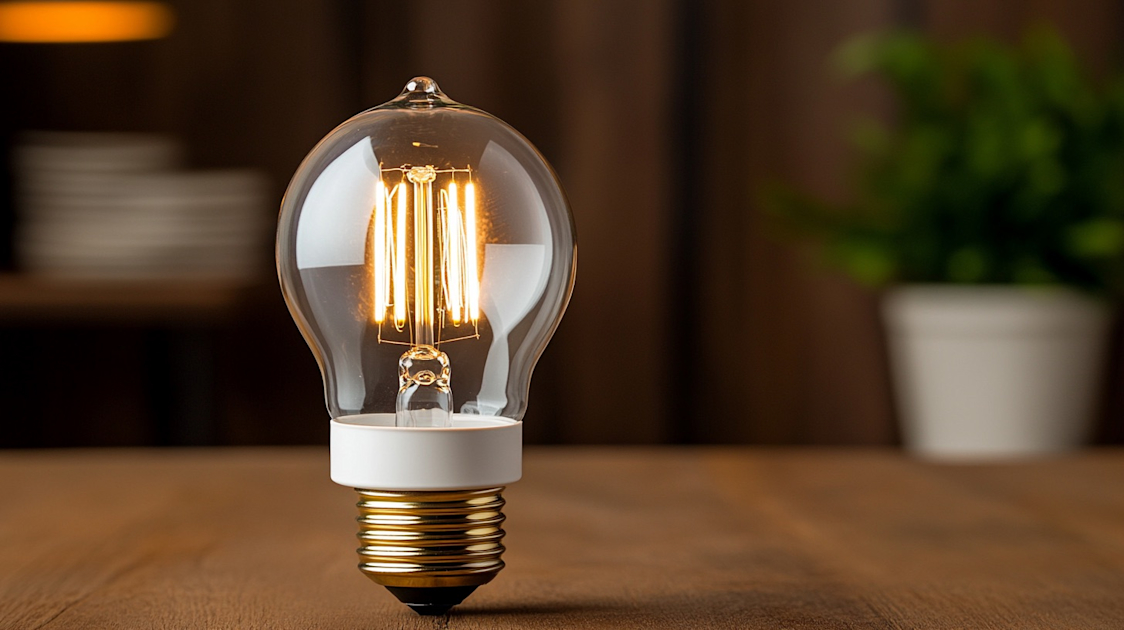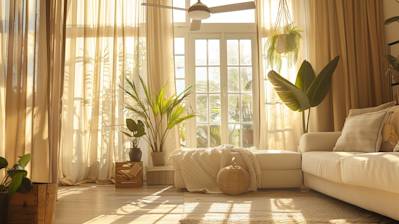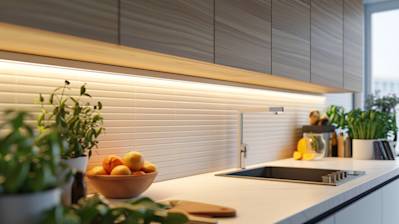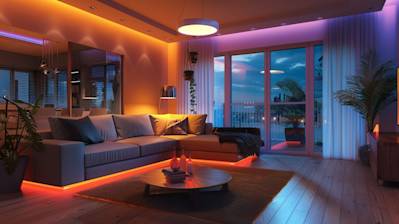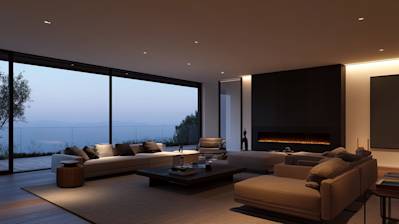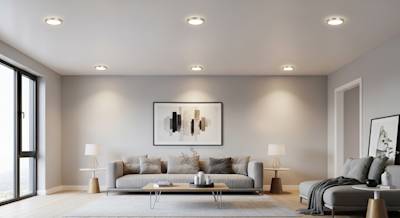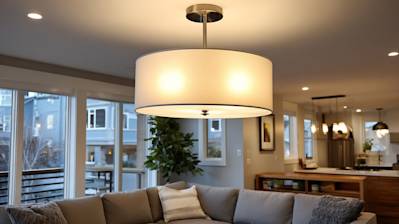Lighting is an essential aspect of any space, whether residential or commercial. It’s safe to say that in the world of lighting, not all bulbs are created equal. One crucial option you will often come across in your search for the perfect lighting fixture is the Type B bulb. The Type B bulb doesn't get as much attention as it deserves, yet it's part of almost every home or office building. This article provides a detailed description of Type B bulbs; from their defining features, to their uses, benefits and how to choose the most suitable one. Let’s shine a light on Type B bulbs.
What is a Type B Bulb?
First on our comprehensive list is defining what a Type B bulb exactly is. A Type B light bulb is a type of bulb that is usually smaller compared to other bulb types like A and C. It has a blunt tip, and often resembles a torpedo or flame. These bulbs typically have base types of E12 Candelabra, E17 Intermediate, or E26 Medium. Furthermore, they range in wattage from 15 to 60 watts.
Features of Type B Bulbs
Type B bulbs come with several defining attributes:
Design: Type B bulbs have a unique flame-like shape, designed to be aesthetically pleasing in open fixtures.
Base Type: These bulbs have smaller base types, namely E12 Candelabra, E17 Intermediate, or E26 Medium.
Energy Consumption: Type B bulbs are energy-efficient, especially the Candelabra base ones which can efficiently light up using 15 to 60 watts.
Size: These bulbs are relatively smaller, making them suitable for fixtures where larger, standard bulbs wouldn’t fit.
Benefits of Using Type B Bulbs
Here are some advantages of using Type B bulbs:
- Energy Efficiency: Under normal usage, Type B bulbs use less electricity.
- Versatility: Their size makes them perfect for various lighting fixtures.
- Aesthetics: These bulbs have an elegant flame-like shape that adds charm to any space.
- Reduced heat emission: They emit less heat than many other types of bulbs.
Applications of Type B Bulbs
Type B light bulbs are not limited in their usage. Some common applications include;
Decorative lighting fixtures: Such as wall sconces, chandeliers, and some pendant lights.
Lamps: They are ideal for small table lamps or accent lamps where a small size is required.
Night lights: Type B bulbs are common for subtle lighting required for night lights or fairy lights.
Choosing the Right Type B Bulb
Choosing the right Type B bulb involves considering a couple of key factors:
- Fixture Size: Check if the light fixture can accommodate the size of the bulb.
- Base Type: Match the base type (E12, E17, E26) of the bulb to your light fixture.
- Wattage: Type B bulbs range from 15 to 60 watts. Consider your lighting needs when selecting wattage.
How to Install a Type B Bulb
Installing a Type B bulb is a simple and straightforward process:
- Make sure your light fixture is off and completely cool.
- Remove the old bulb by unscrewing it counterclockwise.
- Screw your Type B bulb into the fixture by turning it clockwise.
- Once the bulb is tightly in place, turn on the fixture to ensure the bulb lights up.
Frequently Asked Questions about Type B Bulb
What kind of fixtures can use a type B bulb?
Type B bulbs are perfect in decorative fixtures. They're often used in chandeliers, wall sconces, decorative table lamps, multi-bulb hanging fixtures, and other visually attractive fittings. Their unique shapes enhance the aesthetic of the fixture.
Is type B bulb energy efficient?
Well, Energy efficiency largely depends on the technology the bulb is built on, not the bulb's type. LEDs, for instance, are currently the most energy-efficient B type bulbs available in the market.
Are type B bulbs expensive to maintain?
The cost of maintaining type B bulbs mainly depends on the bulb’s technology. For instance, LED B type bulbs are quite affordable to maintain. They have a high energy efficiency and a prolonged lifespan, significantly minimizing their overall cost.
How long can a type B bulb last?
Type B bulb's longevity depends on the underlying technology used. LED type B bulbs, for instance, can last for up to 50,000 hours, while incandescent bulbs often last between 1,000 and 2,000 hours.
Are type B bulbs bright enough for my space?
The brightness of a type B bulb is usually measured in lumens. The higher the lumens, the brighter the bulb. LED B type bulbs are available in various brightness levels, but they're generally not suitable for task lighting. They're primarily used for mood and accent lighting.
Are there color variations in type B bulbs?
Yes, type B bulbs come in various colors. Apart from the typical warm-white color, you can find colored type B bulbs in hues such as red, blue, green, and yellow. These options allow you to create different atmospheres in your space depending on your preference.
Is it possible to find a dimmable type B bulb?
Yes, you can get dimmable type B bulbs, particularly the ones built on LED technology. Dimmable lights give you flexibility over the mood of your room, allowing you to adjust the brightness as needed.
Are there recyclable type B bulbs?
Yes, LED type B bulbs are recyclable. Once your bulbs reach the end of their lifespan, you can take them to recycling centers rather than the regular garbage. It's a great way to minimize environmental harm.
Pros of Type B Bulbs
Energy Efficiency
One of the key advantages of using type B bulbs is their energy efficiency. These bulbs consume less energy as compared to traditional incandescent bulbs. This means that you can lower your energy consumption and, as a result, reduce your energy bills. Economically and environmentally, this is a significant advantage.
Long Lifespan
Type B bulbs usually have a much longer lifespan than traditional incandescent bulbs. On average, a type B bulb can last for up to 25,000 hours, whereas a traditional bulb will only last around 1,000 hours. This long lifespan means that you won't have to replace your bulbs as often, which can save you both money and hassle.
Lower Heat Emission
Unlike traditional incicandescent bulbs, type B bulbs also emit less heat, which makes them safer for use. Incandescent bulbs can become very hot when used for a prolonged period, posing a potential fire hazard. The reduced heat output of type B bulbs means that this risk is significantly diminished.
Better Light Quality
Type B bulbs are known for producing high quality light. The light produced by these bulbs is crisp and clear, making them ideal for use in areas where good lighting is required.
Versatility
Thanks to their design, type B bulbs are incredibly versatile, and they can be used in a wide range of fixtures and fittings. This means that you have a great deal of flexibility when it comes to choosing where to install these bulbs.
Cons of Type B Bulbs
Higher Initial Cost
While there is no denying the long-term savings that can be made with type B bulbs, they do come with a higher initial cost. This means that you will need to outlay more money upfront in order to make these savings.
Compatibility Issues
Despite their versatility, type B bulbs may still face compatibility issues with some light fixtures. For this reason, you should always make sure that a light fixture is compatible with type B bulbs before trying to install them.
Dimming Limitations
One of the disadvantages of type B bulbs is that they often come with dimming limitations. While there are models that are dimmable, they typically don't dim as smoothly or as far down as incandescent bulbs. This can be rather frustrating if you're looking to create a certain atmosphere with your lighting.
Not as Warm a Light
Compared to incandescent bulbs, type B bulbs may not emit as warm a light. Incandescent bulbs are known for their warm, soft light, which can make a room feel cozy and inviting. Type B bulbs, on the other hand, can sometimes emit a harsher, cooler light. This is a matter of personal preference, of course, and some people may actually prefer the cooler light of a type B bulb.
Disposal Concerns
Type B bulbs often contain a small amount of mercury, which requires careful disposal. If these bulbs break or are improperly disposed of, they can release this mercury into the environment, which is harmful. It's important to recycle these bulbs properly to prevent environmental damage.
Summary
Type B bulbs are pretty versatile and helpful in a lot of situations. They're a top pick for a lot of folks because they're energy efficient and have a longer lifespan than other types. They come in a variety of styles and shapes to suit your needs. From accent lighting to everyday use, the type B bulb has got you covered.
The type B bulb is also flexible in terms of compatibility. You don't have to go on a treasure hunt to find a lamp or fixture that will accommodate it. It's nice to know that you can just twist one in and you're good to go. I won't say it's a one-size-fits-all situation, but it definitely takes a lot of the guesswork out of the equation.
Before thinking of going for another type of bulb, just remember the benefits that come with a type B bulb. You’re not just getting a commodity; you’re getting peace of mind. It's great to know that something as simple as choosing the right type of light bulb can help reduce energy consumption and be kinder to the environment. The type B bulb, with its efficiency and versatility, fits the bill perfectly.
About Sagan Electric
Sagan Electric is your trusty neighborhood electrician proudly serving Sacramento, CA, for over 20 years. Based in the heart of the city, we are a family-owned business with deep roots in the community. We specialize in both residential and commercial electrical services, from simple repairs to complete rewirings. Our certified, experienced, and friendly electricians are known for their top-notch workmanship, attention to detail, and speedy service. Next time you're in need of professional electrical help, remember – at Sagan Electric, no job is too big or too small!
Tags: lighting, incandescent, energy-efficient,

